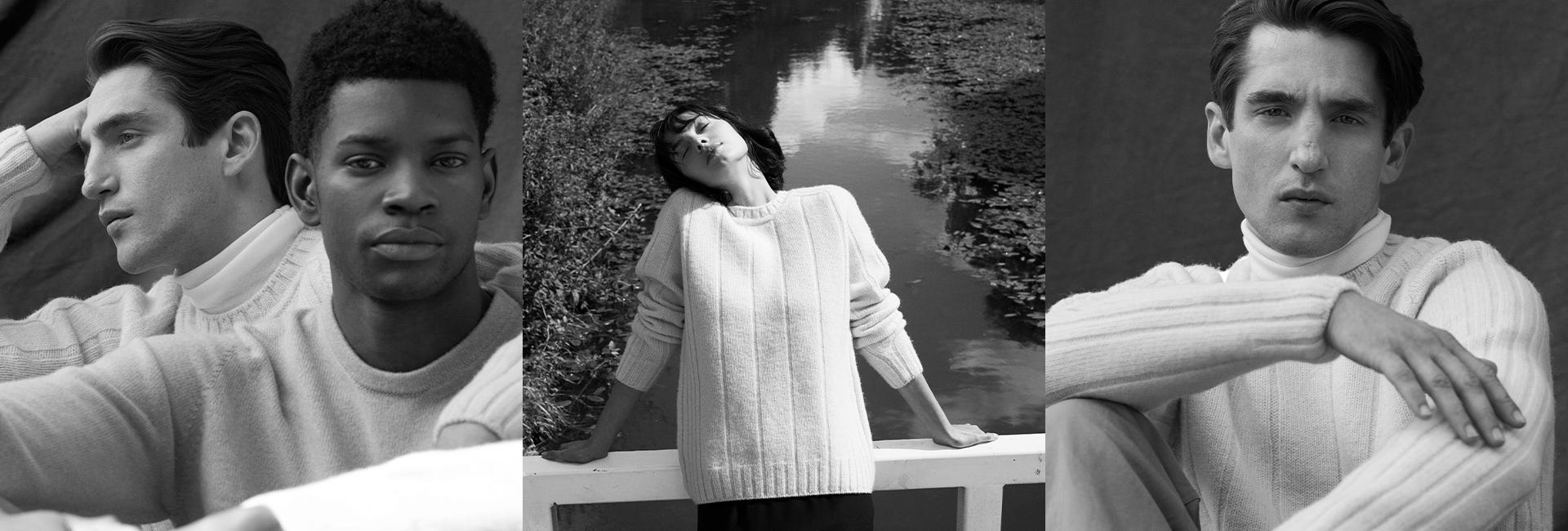The jumper has a unique significance in today’s modern wardrobe. Comfortable, reliable, and endlessly wearable, its constant presence in our day-to-day lives means each jumper racks up its own sentimental history — each pullover has seen it all. It bears witness to moments of joy and laughter; we shed it when the spring sun shines; we lay it on the grass to sit on in the park. We reach for to keep us warm or pull closer and wrap ourselves in during moments of quiet. A jumper is also one of the most likely garments to be handed down through familial generations. Each offers us our own sartorial timeline of a life being lived.
So ubiquitous are they, that most of us today have our own collections. There’s the forever favourite; the ones we wear to work and others we wear on weekends. There’s the understated black, navys and greys which are worn on-repeat; others are printed or patterned and make a statement when we want to stand out. Some are smart and worn with suiting. Others err on the side of casual, which we slip on over gym kit after a class or a run. The jumper’s unwavering appropriateness means there really is one for every occasion — it’s no wonder it’s endured as an everyday staple for decades.
With such contemporary appeal, it’s hard to believe the jumper predates Queen Victoria’s ascent to the throne: its roots are practically historic. The pullover was originally designed for fishermen, to keep them warm and dry on deck. But during the Victorian era, as sports like tennis, cricket and golf grew in popularity, so did the jumper’s resonance: men, who were otherwise wearing formal suits, needed clothes that enabled movement on the lawns. The jersey jumper was born.
Its status also rose along with the rational dress movement — an 1881 campaign led by first wave feminists in Victorian England, who were calling for women’s education and suffrage along with sartorial ease. Corsets and crinolines were, in time, replaced with cozy pieces that were a lot less restrictive — these Londoners paved the way for Coco Chanel to champion menswear for women, some 50 years later. Women soon adopted them in droves: think Carolyn Bassette Kennedy, Princess Diana and Alexa Chung. In Chanel’s day, women had to buy men’s clothing to wear such pieces, but now, many women choose to shop in the men’s section when it comes to knits. This unisex style has universal appeal.
John Smedley was one of the first brands to really put the jumper on the map — and long before Chanel did. After evolving its production line from underwear to outer garments to meet popular demand in the early 19th century, John Smedley pioneered the fully-fashioned knit, where superfine merino wool was turned into jumpers without seams: the result was a pullover that felt refined. Arguably one of the earliest examples of smart-casual style. And this early legacy has lasted: pieces in the current John Smedley collection are still crafted the same way. It’s a testament to the jumper and the craftsmanship’s endurance.
The jumper today is crafted from cotton, as well as wool — with the finest examples being from Sea Island cotton. This rare fibre is one of the finest cottons in the world thanks to its extra-long thread length, which ages well, feels super soft against the skin and doesn’t crumple in the wash. In other words, they’re the perfect choice for a jumper that will withstand the test of time — both stylistically, emotionally, and physically. A future proof purchase indeed.







%20(1).png)
.png)
.png)
